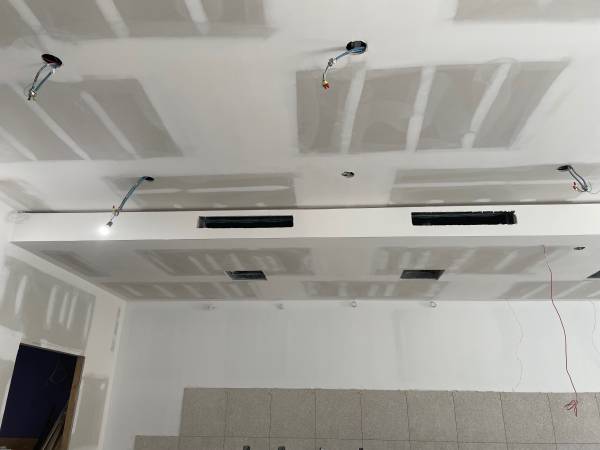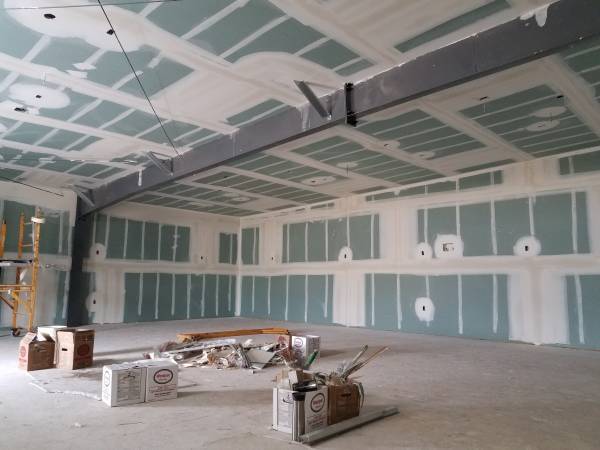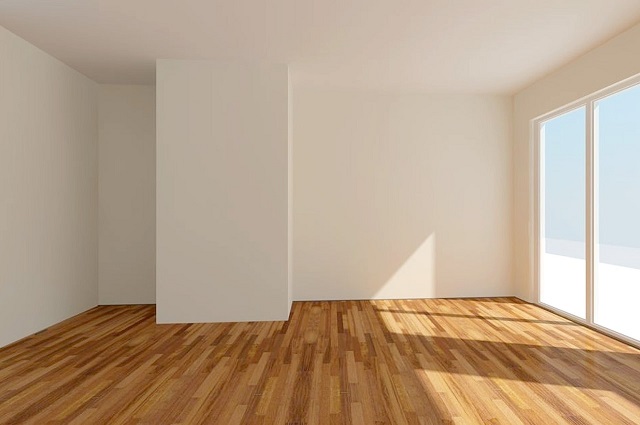Table of Contents
Proper drywall taping technique fills joints, hides seams, and creates a professional finish.
So you’ve got your drywall up, and now it’s time to make those seams disappear like magic, right? Well, it’s all about the technique, my friend. Grab your joint compound and let’s get to work! Choose the right premixed taping compound or mix up that powder according to instructions if you’re feeling fancy. Just remember, thin it down for that first coat so it glides on smooth like butter.
Now, when it comes to taping the seams, don’t skimp on the paper drywall tape. It’s your best buddy for this job. Apply a thin layer of compound, slap on that tape, and embed it nicely. Then, it’s time to rock that first coat. Cover those seams, feather out the edges, and keep it nice and smooth. Grab your taping knife and work your magic with finesse. Those imperceptible transitions are the key to a pro finish, so take your time and enjoy the process.
Prepare the Joint Compound
Alright, let’s get into the nitty-gritty of preparing that joint compound for your drywall taping adventure. First things first, when choosing your premixed taping compound, make sure it’s the right consistency for the job at hand. If it feels a bit too thick, no worries – you can always thin it down a bit for that initial coat. On the flip side, if you’ve got the powder compound, follow those instructions to the T for a perfectly mixed concoction.
Now, when it comes to taping those seams, remember to opt for the trusty paper drywall tape for most of your projects. It’s a reliable choice that gets the job done well. When applying that first thin layer of compound and embedding the tape, you’re on your way to seamless joints and hidden seams that’ll give your walls that polished, professional look. So, take your time, follow the steps, and before you know it, you’ll be a drywall taping pro!
Choose the right premixed taping compound.
When it comes to selecting the ideal premixed taping compound for your drywall project, it’s important to consider factors such as the size of the job, your level of experience, and the environment where the drywall will be installed. Different compounds offer varying drying times and consistencies, so it’s essential to choose one that aligns with your specific needs. Additionally, be mindful of any special requirements that the project may have, such as fire resistance or mold prevention features. By taking these aspects into account, you can ensure that you’re choosing the right premixed taping compound for a successful outcome.
Not all premixed taping compounds are created equal, so it’s crucial to do some research and read reviews before making a decision. Look for products that have a good track record of performance and are known for their ease of application and sandability. Pay attention to the labeling to see if the compound is suitable for both embedding tape and finishing coats. Furthermore, consider the manufacturer’s recommendations for the type of joint compound that works best with the drywall you are using. By being thoughtful and informed in your selection, you can set yourself up for a smoother taping process and a professional finish.
Thin down compound for first coat.
Alright, so when it comes to getting that first coat just right on your drywall taping job, thinning down the compound is key. This step helps you achieve a smoother application and better adhesion to the tape. Plus, it makes feathering out the edges a whole lot easier. You want the consistency to be smooth and spreadable, so adding a bit of water to the premixed compound does the trick. Just remember, don’t go overboard with the water – you still want it to hold its shape when applied.
Now, onto the nitty-gritty of thinning down that compound. Start by pouring the premixed compound into a clean bucket. Add a small amount of water at a time and mix it thoroughly with a stir stick. Keep mixing until you reach a creamy consistency that is easy to spread but not too runny. It’s all about finding that sweet spot where it glides on smoothly and covers the tape evenly. Once you’ve got it just right, you’re ready to tackle those seams and joints with confidence. Just remember, practice makes perfect, so don’t be afraid to experiment a bit to find what works best for your project.
Mix powder compound according to instructions.
Once you’ve got your powder compound ready to roll, it’s time to mix it up and get down to business. Your bag of powder should have all the instructions you need to whip up the perfect concoction. Grab yourself a bucket and pour in the amount of water it tells you to, then slowly sprinkle in the powder while giving it a good mix. Keep stirring until you’ve got a smooth and creamy consistency – you don’t want any lumps messing up your smooth finish. Remember, always follow the instructions to a tee to ensure you’re on the right track to taping success!
Mixing powder compound might sound like a recipe for disaster, but once you’ve nailed the process, you’ll be taping like a pro. The key is to take your time and pour in the water gradually while whisking away. Don’t rush the mixing process – a little patience goes a long way in getting that perfect blend. And hey, if you’re feeling a bit unsure, don’t be afraid to double-check those instructions. It’s better to be safe than sorry when it comes to getting that powder compound just right!
Tape the Seams
If you’re about to start taping those seams, make sure you have your paper drywall tape ready. This trusty stuff is perfect for most jobs and will help you achieve seamless joints. Grab your taping knife, coat it lightly with joint compound, and then smoothly embed the tape into the compound. Make sure it’s sitting snugly in place for a solid base to work your magic on!
Once you’ve laid down that paper tape like a pro, it’s time to add a thin layer of compound on top to lock it in place. Grab your taping knife again and apply a smooth coat over the seams, ensuring everything is nice and covered. Aim for around 6-8 inches width to feather out the edges for those invisible transitions. With this step done, you’re well on your way to a flawless finish that’ll have your drywall looking top-notch in no time.
Use paper drywall tape for most jobs.
Paper drywall tape is the tried-and-true choice for most drywall taping projects. It’s easy to work with and provides solid reinforcement for seams. This type of tape is a staple in the toolkit of many DIYers and professionals alike. It’s cost-effective, versatile, and readily available at most hardware stores.
When using paper drywall tape, remember to apply a thin layer of joint compound before embedding the tape. This helps the tape adhere securely to the seams and ensures a smooth finish. Don’t be tempted to skip this step – it’s essential for a professional-looking result. With paper drywall tape, you can tackle a variety of taping jobs with confidence and precision.
Apply thin layer of compound and embed tape.
Once you’ve got your joint compound properly prepared, it’s time to dive into applying a thin layer of it and embedding the tape. This step is crucial for ensuring that your drywall has seamless joints and hidden seams – the key to achieving that polished, professional look. Start by grabbing your paper drywall tape, which is your trusty sidekick for most taping jobs. Gently lay it over the joints and seams, ready to be seamlessly integrated into the compound.
As you ease into applying that thin layer of compound, remember that less is more in this scenario. You want just enough compound to smoothly cover the tape without any excess globs or bumps disrupting the seamless finish. With a steady hand and a keen eye for detail, gently press the tape into the compound, ensuring it’s securely embedded and ready to work its magic on your drywall. It’s all about achieving that perfect balance of finesse and functionality in this delicate dance of taping and embedding.
Apply First Coat
Cover all your seams with the joint compound, making sure to feather it out onto the drywall for a seamless look. Grab your 6-8 inch taping knife and apply a thin, smooth layer over the tape to blend it in. Remember, the key here is to keep it thin and build it up gradually – you don’t want to go overboard with the compound.
As you work your way around the room, focus on achieving a consistent finish over all the seams. Take your time to ensure that the compound is spread evenly and smoothly. Don’t rush this step – patience is key to getting that polished, professional look.
Cover tape and feather out onto drywall.
Alright, so you’ve got your paper drywall tape all set and ready to go, now it’s time to cover it up and feather it out onto the drywall. This step is crucial for making those joints disappear and blending everything in seamlessly. Think of it like adding the icing on a cake – smooth, even, and oh-so satisfying when done right.
As you cover the tape with your joint compound, make sure to feather it out onto the drywall surrounding the seams. This means spreading the compound beyond the tape, gradually thinning it out towards the edges. The key here is to create a smooth transition from the tape to the drywall without leaving any noticeable bumps or ridges. Take your time, use a light touch, and don’t sweat it if you have to go over an area a few times to get it just right. Remember, practice makes perfect, so don’t be afraid to experiment and find your groove with this technique.
Apply thin, smooth coat over all seams. Use 6-8 inch taping knife.
Alright, when you’re on to this step, grab your 6-8 inch taping knife and let’s get that coat on nice and smooth. Make sure you cover all those seams, don’t miss a spot. This is where you want to really finesse it, feathering it out to blend seamlessly with the rest of the wall.
Once you’ve got that first coat nice and thin, take a step back and admire your work. It’s all about building up those layers, so let it dry completely before adding on the next one. Remember, each coat should be a bit wider than the last, ensuring those seams disappear like magic. Keep at it, feathering those edges delicately for that flawless finish.
Second and Third Coats
Once the first coat is dry and fully set, it’s time to move on to the next stage of applying additional layers of compound to achieve a seamless finish. Just like adding layers of frosting to a cake, these subsequent coats help build up the surface and blend the seams even further. This step is crucial in ensuring a smooth and polished look to your drywall, so take your time and focus on feathering out the edges for a flawless transition. Remember, wider than the last coat is key to gradually leveling the surface and hiding any imperfections that may still be visible.
As you apply the second and third coats, it’s important to maintain a light touch and avoid pressing too hard on the taping knife. By gently feathering out the compound beyond the edges of the seams, you’ll create a seamless transition between the drywall and the taped areas. Take care to extend the width of each coat slightly wider than the previous one, gradually building up the layers to achieve a professional finish. Keep in mind that patience is key during this process, as rushing through the coats can result in visible seams and uneven surfaces.
Allow first coat to fully dry before second coat.
Once your first coat is on, it’s time to let it do its thing. You don’t want to rush this step because it’s crucial for getting that smooth, seamless finish. Give it some breathing room to dry out completely before moving on to the next coat. Picture it like a freshly baked cake – you wouldn’t try to frost it while it’s still warm, right? Same idea applies here. Let that first layer set and firm up before you dive into adding more on top.
This waiting game might feel a tad tedious, but trust the process. It’s all about building up that solid foundation for a flawless end result. Take a breather, grab a cup of coffee, and let that first coat have its moment to shine. Jumping the gun and not letting it properly dry can throw off the whole shebang, leaving you with a lumpy, uneven mess. So, go on, give it the time it deserves – you’ll thank yourself later when your walls are looking as smooth as a baby’s bottom.
Apply slightly wider than first coat.
Alright, so here’s the deal with this step: you gotta be a bit generous with the compound this time. The trick is to widen the area you cover compared to the first coat. It’s all about building up that smooth transition, making sure there are no bumps or ridges to mess up your aesthetic game. Keep it slick and even as you spread out the compound, blending it seamlessly into the surrounding drywall surface.
Remember, it’s kind of like painting with a broader brush this time around. You want to overlap the edges of your first coat, extending it just a tad further to really feather out those seams. Don’t worry too much about perfection at this stage; it’s all about setting yourself up for that final knockout round of finishing touches. So go on, smooth on that wider layer of compound with confidence, working your way towards achieving those flawless, invisible seams you’ve been dreaming about.
Feather edges for imperceptible transitions. Avoid scuffing drywall paper.
To achieve seamless transitions in your drywall taping, it’s crucial to feather the edges for a flawless finish. This means gently blending the joint compound outwards from the seam to create a smooth and imperceptible connection between the drywall panels. By feathering the edges skillfully, you can avoid any noticeable ridges or bumps that might detract from the overall polished look of your walls. Remember, subtlety is key when it comes to feathering edges—go slow and steady for the best results.
When working on feathering edges, be extra careful not to scuff the drywall paper. A light touch is essential here to prevent any damage to the paper surface that could later show through the paint or texture. The goal is to maintain the integrity of the drywall while achieving that seamless finish. By being mindful of how you handle the taping knife and apply pressure, you can ensure a professional outcome without any unsightly blemishes. Just take your time, be gentle, and let your skills shine through in the final result.
Finish Coat. Apply thin final coat, extending 10-12 inches beyond seams.
After all the careful taping and layering, here comes the last stretch – putting on that final thin layer of joint compound that stretches out a good 10-12 inches beyond where your seams sit hidden beneath. This is the grand finale, the ultimate smoothness session that will ensure those seams vanish into the wall as if they were never there. It’s like the icing on a cake – a smooth, flawless finish that leaves your drywall looking like a professional job well done.
So, grab your taping knife and spread that final coat over your seams, feathering it out generously to seamlessly blend into the surrounding drywall. This last step is where your meticulous work pays off, where all the layers come together into one beautifully uniform surface. Take your time, be delicate yet purposeful in your strokes, and revel in the satisfaction of knowing that your drywall taping job is now complete, with seams that are nothing but a distant memory beneath that expertly applied finish coat.



